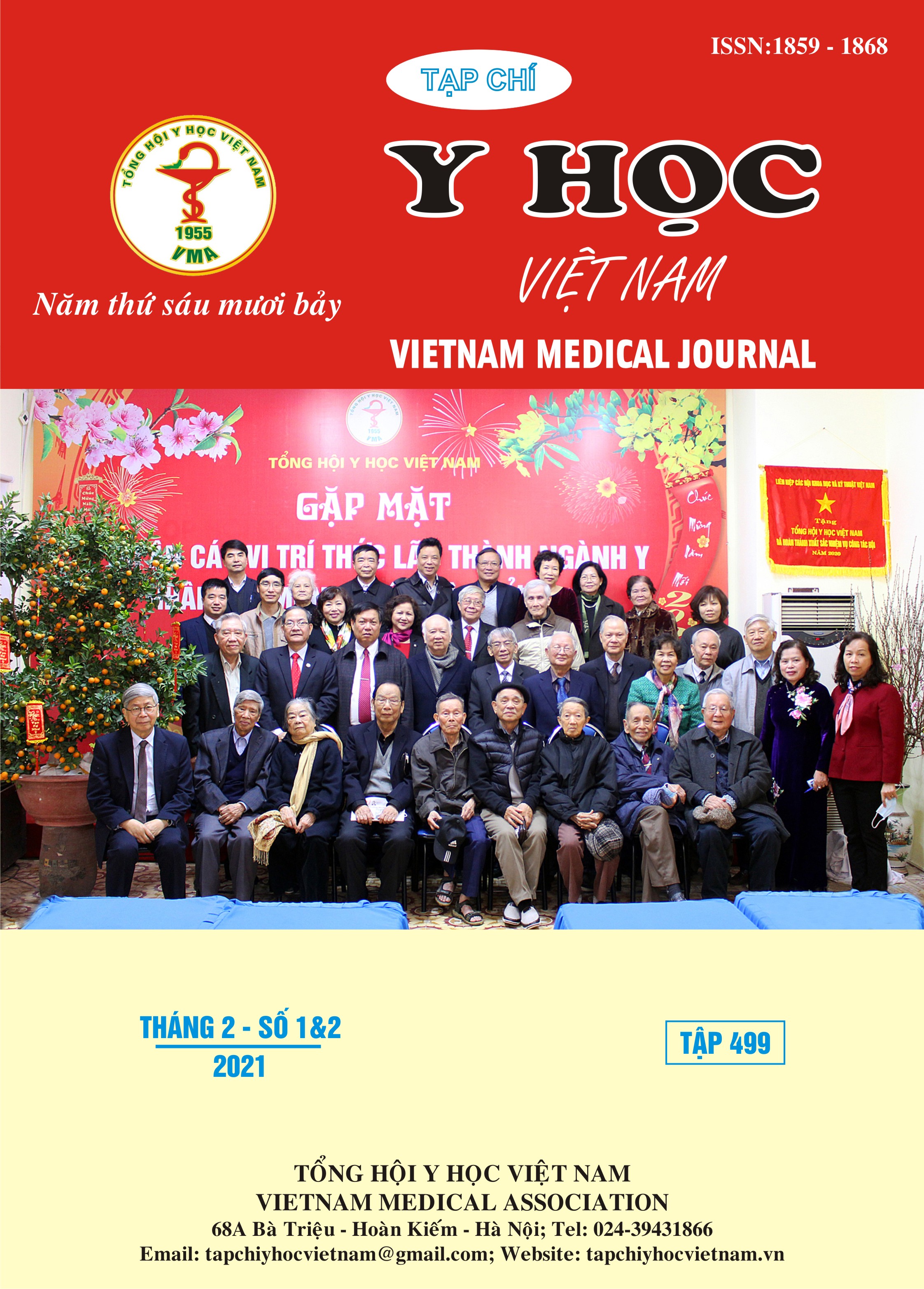REMARKS ON SURGICAL MANAGEMENT OF THE DESCENDING NECROTIZING MEDIASTINITIS CAUSED BY ESOPHAGEAL PERFORATION ON EMERGENCY AT VIET DUC UNIVERSITY HOSPITAL
Main Article Content
Abstract
Purpose: Descending Necrotizing Mediastinitis (DNM) caused by perforation of the esophagus has been known as the lifethreatening infection. Aim of this paper is to evaluate the results of surgical treatment of DNM at Viet Duc Hospital. Materials and Methods: A prospective and retrospective study of cases diagnosed DNM due to perforation of the esophagus were treated in Viet Duc Hospital from 1/2016 to 3/2019 including the deaths and discharged to die. The diagnosis criterias of DNM was based on Estrera (1983) standard. The database is collected and analysed by SPSS.20.0. The proposal of study was agreed by the scientific committee of hospital. Results: A total of 40 cases, rate of man and women were 4,7:1, mostly ages were between 36 and 60 years old in 60%. Esophageal perforation caused by bone is in 88,5%. Location esophageal lesions: 1/3 upper in 57,5%, 1/3 middle in 22,5 % and 20 % accounted for one third lower part. Type I was 55%, and type IIb accounts for 45%, however, no typeIIa was observed. Surgical procedures: Pus drainage including drainage only 82.1%, by thoracotomy 17.9%. Drainage includes: cervical drainage 40.6%; Chest drainage 31.2%, Cervical + Chest drainage 28.1%. Thoracotomy in 7/39 cases including open surgery (05) and VATs – Video Assisted Thoracotomies (02). Isolation of esophageal perforation: 71% gastrostomy, and jejunostomy in 29%. Other procedures: 2 cases of vascular wound treatment, stent graft 02 cases due to arc aotic artery fistula to esophagus. Treatment results: Complications 7 (17.5%), Death: 3 cases (7.5%). Conclusions and recommendations: Surgical treatment of DNM on emergency due to perforation of the esophagus needs to drain pus, according to the position of the abscess, cervical drain and chest tube in combination, associated with the esophageal isolation by gastrostomy or jejunostomy.
Article Details
Keywords
Perforation of the esophagus, Mediastinal abscess, Descending Necrotizing Mediastinitis
References
2. Estrera AS, Lanay MJ, Grisham JM et al (1983), Descending necrotizing mediastinitis. Surg Gynecol Obstet ;157 :545-52.
3. Endo S, Murayama F, Hasegawa T, Yamamoto S, Yamagychi T, Sohara Y, et al (1999), Guideline of surgical management based on diffusionof descending necrotizing mediastinitis, Jpn J Thorac Cardiovasc Surg.; 47: 14–19.
4. F. Kroepil & M. Schauer & A. M. Raffel & P. Kröpil & C. F. Eisenberger & W. T. Knoefel (2013), Treatment of Early and Delayed Esophageal Perforation. Indian J Surg;75(6):469–472.
5. E. Weaver; X. Nguyen; M.A. Brooks (2010), Descending Necrotising Mediastinitis: two case reports and review of the literature, Eur.Respir. Rev; Jun;19 (116) :141-9.
6. Sofia Arizaga, Edgar Bruck Rodas, Raul Pino, Jeovanni Reinoso et al (2015). Descending Necrotizing Cervicomediastinitis Secondary to Esophageal Perforation: Management in a Hospital with Limited resources. Paramerican Journal of Trauma, Critical Care & Emergency Surgery; 4(1):23-29
7. Nguyen Duc Chinh, Tran Tuan Anh, Pham Vu Hung, Pham Gia Anh, Philipp Omar Hannah, Tran Dinh Tho (2017), Experience on diagnosis of descending necrotizing mediastinitis at Viet Duc Hospital, The Thai Journal of Surgery Volume 38 January - March 2017.
8. Nguyễn Công Minh (2013). Hội chứng Boerhaave hay hội chứng vỡ thực quản do nôn ói mạnh tại bệnh viện Chợ Rẫy và bệnh viện cấp cứu Trưng Vương trong 14 năm (1999 – 2012). Nghiên cứu Y học Y Học TP. Hồ Chí Minh * Tập 17 * Phụ bản của Số 4.
9. Ričardas Janilionis1, Žymantas Jagelavičius1, Pavel Petrik1, Gintaras Kiškis1, Vytautas Jovaišas1, Algis Kybartas1, at al (2013). Diffuse descending necrotizing mediastinitis: surgical treatment and outcomes in a single-centre series. Acta medica lituanica. 2013. Vol. 20. No. 3. P.117–128.


